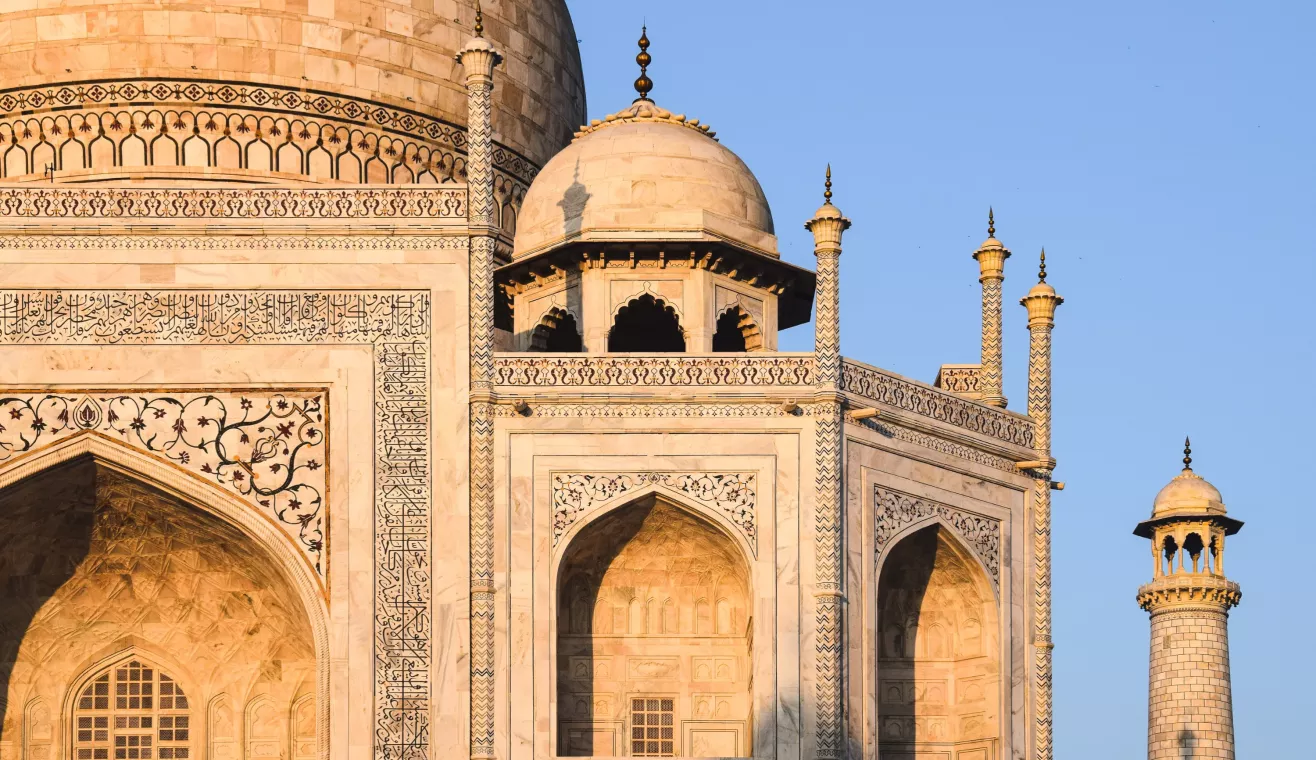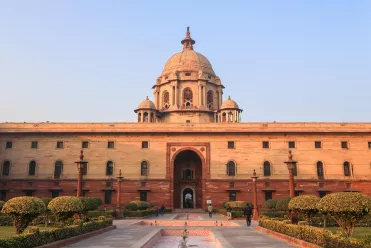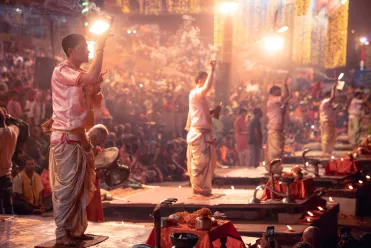- Accueil
- Inspirations
- Our guide to travelling in India
Our guide to travelling in India

Discover India, a country with a thousand facets, combining ancestral traditions, grandiose landscapes and a unique cultural effervescence. This guide will give you all the information you need to plan an unforgettable trip to this fascinating country.
To find out more about India...
India is known for its geographical, cultural and historical diversity. From the peaks of the Himalayas to the beaches of Kerala, from the desert of Rajasthan to the temples, India offers a unique experience. Here are just a few must-seesA few things you need to know
From Paris, a direct flight to Delhi or Mumbai takes around 8 to 10 hours. Return ticket prices generally range from 500 to 1,000 euros, depending on the season and the airline chosen.
Discover all our flights and our best prices directly on our flight booking platform.
India is huge, and a minimum stay of two weeks is recommended to discover a few regions. For a more complete immersion, three to four weeks are ideal.
- Mandatory visa : For French nationals, a tourist visa is required. It is possible to obtain an e-Visa online before departure.
- Passport : Must be valid at least 6 months after the planned return date.
Please remember to check the latest visa requirements on the Indian government website before departure.
India has more than 20 official languages, but English is widely spoken, especially in major cities and tourist areas. Hindi is the main language in the north of the country, while other regional languages such as Tamil, Bengali or Malayalam dominate in the south and east.
Here are some useful expressions in Hindi:
- Namaste: Hello / Goodbye
- Dhanyavaad: Thank you
- Haan / Nahi: Yes / No Kitne ka hai? : How much does it cost?
- Khana bahut swadisht hai : The food is delicious
The official currency is the Indian Rupee (INR).
As a rough guide, 1 euro is equivalent to around 90 INR. It's best to exchange money at exchange offices or local banks. Credit cards are accepted in major cities, but always carry cash for small purchases.
India has three main seasons:
- Winter (October to March): Ideal for visiting most regions, with pleasant temperatures.
- Summer (April to June): Intense heat, especially in the north and center of the country.
- Monsoon (June to September): Rainy season, which can make some travel more difficult but offers verdant landscapes.
When to go?
- October to March is the best time to explore the north (Rajasthan, Delhi, Agra, Varanasi).
- November to February is ideal for Kerala and the beaches of Goa.
- Summer (June to September) is perfect for trekking in the Himalayas.
Indian cuisine is a festival of flavors and spices. Among the must-tries:
- Curry: A dish simmered with spices, often based on vegetables, meat or fish.
- Butter chicken: Chicken marinated in a creamy tomato and spice sauce.
- Naans and chapatis: Traditional breads accompanying most dishes.
- Biryani: Spiced rice mixed with meat or vegetables.
- Samosas: Doughnuts stuffed with vegetables or meat.
- Masala chai: A must-try spiced tea.
India also offers many vegetarian options, as plant-based cuisine is widespread in many parts of the country.
India's time zone is GMT +5:30.
- In winter, when it's midday in Paris, it's 5:30 pm in Delhi.
- In summer, when it's midday in Paris, it's 4:30 pm in Delhi.
Get ready for an unforgettable adventure in India!
Whether you're passionate about history, spirituality, nature or gastronomy, India has so much to offer. Each region reveals a new face of the country, between bustling cities and serene landscapes.
Happy travels, and don't hesitate to share your experience with us by mentioning us on social networks or using the hashtag #atcroutesdumonde!




